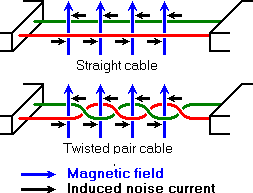Serial, RS485: Difference between revisions
Jump to navigation
Jump to search
Wvengineer (talk | contribs) m (→Overview) |
Wvengineer (talk | contribs) |
||
| Line 13: | Line 13: | ||
Advantages of RS-422 and RS-485: | Advantages of RS-422 and RS-485: | ||
<UL> | <UL> | ||
<LI>Higher data rates up to | <LI>Higher data rates up to 35Mbps | ||
<LI>Longer cable lengths up to 4000 Feet | <LI>Longer cable lengths up to 4000 Feet | ||
<LI>Noise rejection or total noise immunity | <LI>Noise rejection or total noise immunity | ||
Revision as of 02:08, 18 March 2009
Overview
RS-485 is very similar to RS-422 where it is balanced pair communications in order to archive high bit rates over long distances with minimal or no noise introduced into the data.
EIA-485 only specifies electrical characteristics of the driver and the receiver. It does not specify or recommend any data protocol. EIA-485 enables the configuration of inexpensive local networks and multidrop communications links. It offers high data transmission speeds (35 Mbit/s up to 10 m and 100 kbit/s at 1200 m). Since it uses a differential balanced line over twisted pair (like EIA-422), it can span relatively large distances (up to 4000 feet or just over 1200 metres).
Advantages & Disadvantages
Advantages of RS-422 and RS-485:
- Higher data rates up to 35Mbps
- Longer cable lengths up to 4000 Feet
- Noise rejection or total noise immunity
- Any ground loops would not affect data transmission
Disadvantages of RS-422 and RS-485:
- Only one transmitter for most applications (applies only to RS-422)
- More cabling required compared to RS-232
- Not as common compared to RS-232
